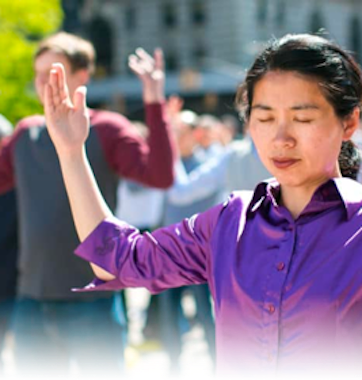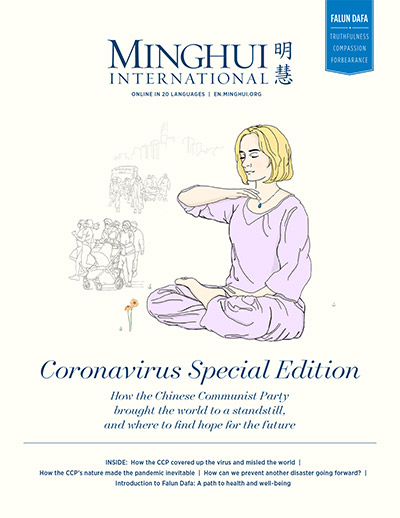(Minghui.org) A resident of Diaobingshan City, Liaoning Province spent three years in the now defunct Masanjia Labor Camp for talking to people about Falun Dafa, a spiritual discipline also known as Falun Gong that has been persecuted in China since July 1999.
Between 2002 and 2005, Ms. Chen Hong suffered inhumane tortures in the labor camp, including weeks of sleep deprivation, being hung up by the wrists, freezing, being tied up in an unnatural position, forced-feeding, and beatings. The labor camp authorities arbitrarily extended her term for three months. The following is Ms. Chen’s account of what she went through.
My name is Chen Hong, and I was born on December 4, 1966. I lived in Building 425, 4th District, Diaobingshan City, Liaoning Province and taught music in the Third Elementary School. For three years and three months I suffered physical and mental torments in Masanjia Labor Camp because I refused to give up my practice of Falun Dafa.
I took my six-year-old son to a park on August 19, 2002 and talked to some parkgoers about Falun Dafa and the brutal persecution. Soon, three officers from the Nanling Police Station arrested me and my son. They took my son home and ransacked the place and confiscated my Falun Dafa books and teaching lecture tapes, and photos of Master Li [the founder of Falun Dafa]. My six-year-old was terrified and grabbed his father and cried as soon as he got home.
The agents from the local 610 Office interrogated me at the Nanling Police Station, and I was handcuffed to a metal chair the whole night. The next day they transferred me to the Diaobingshan Detention Center, where I was held for 15 days before being transferred to Masanjia Forced Labor Camp. The labor camp was built specially for the persecution of Falun Dafa practitioners. There were nearly 1,300 practitioners incarcerated in the labor camp at the time.
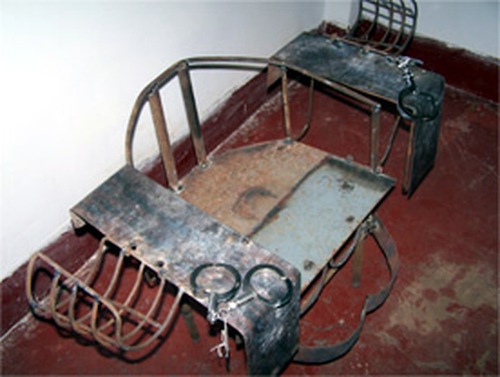 Metal Chair, a tool used to torture Falun Dafa practitioners in the labor camp
Metal Chair, a tool used to torture Falun Dafa practitioners in the labor camp
Isolation from Others
The isolation tactic was used on newly admitted practitioners or those who refused to renounce their faith. To prevent newcomers from having contact with other practitioners, the head guard assigned several collaborators to watch the practitioners closely. There was a special place to keep the practitioners isolated, which was located on the first floor of a building, where no one worked or lived. The isolated practitioner had to sit on a small stool and was not allowed to move. A collaborator would accompany the practitioner to the bathroom. If the practitioner came across another practitioner, they were not allowed to make eye contact or talk.
Three collaborators accompanied me when I was taken to the labor camp. They tried to slander Falun Dafa and Master in an attempt to make me give up my belief. I had to go to the isolation room at 4 a.m. and go back to my cell at 11 p.m. This lasted a month until the labor camp authorities needed manpower to harvest corn. Still, the collaborators would not allow me to talk to other practitioners in the cell.
Many practitioners refused to work for the labor camp. The guards locked some practitioners up in the warehouse, and forced some others to squat until midnight and gave them little food. If the practitioners still refused to go to work the next day, they had to continue to squat.
Intensified Assault
At the end of 2002, the labor camp authorities launched an intensified attack on practitioners who refused to renounce their faith. All the other forced labor camps in the province sent their most vicious guards to help the Masanjia guards torture and “transform” the steadfast practitioners.
I was tortured and forced to stay awake for more than three weeks. At first the guards put me in isolation and had me stay in the squat position around the clock. Two collaborators took turns watching me. I could only use the toilet once a day and was not allowed to wash up. It lasted four days and I kept falling as I was exhausted and sleepy.
They then made me stand for another five days. The collaborators would spray water on my face or drag me on the ground once I dozed off.
To keep me awake, they attached my handcuffs to a heating pipe so that my toes barely touched the ground. This lasted a week, and during this time they tried to handcuff me in various positions to intensify the pain. My wrists bled and the flesh turned purple.
After they put me down, the guards crossed my legs and tied them up with a rope. At the same time they handcuffed my hands behind my back, and had me sit in this position for two days.
 Torture illustration: tied up by a rope with wrists handcuffed behind the back
Torture illustration: tied up by a rope with wrists handcuffed behind the back
Another intensified attack took place a year later in December 2003, when other forced labor camps sent in help again to torture practitioners held in Masanjia. They forced me to squat and stay awake for five days. Seeing that this tactic did not work, they brought in my husband and son, and ordered them to talk me out of the practice. That effort failed as well.
Guard Cui Hong put me outside in the cold with only thin clothes on. The weather in December was around minus ten degrees Celsius. It was so cold that the guards who watched me had to change shifts every hour, despite wearing warm clothes. This freezing torture lasted four days, from 6 a.m. to 6 p.m. every day. When they put me back inside in the evenings, I had to squat or stand and wasn’t allowed to sleep. They only gave me steamed buns and pickles to eat.
Seeing that I still refused to renounce Falun Dafa, five guards crossed my legs and tied up my swollen legs with a rope. To make it worse, they tied my neck to my legs so that I could not straighten my upper body. They stuffed a mop into my mouth once I screamed in pain.
More Tortures
During the New Year in January 2003 the guards tied up my legs for six days straight, and did not let me sleep and wash up. I could only use the toilet once a day. After they untied me, my knees hurt so much that someone had to carry me out.
In May that year, the guards tied my wrists with a rope and tied the rope to a heating pipe and a door frame. My toes could barely touch the floor and this put a lot of strain on my shoulders and wrists. This lasted over 20 days, during which time I was not allowed to sleep, wash up, or use the toilet for more than once a day. After that my feet became swollen, and my arms had no feeling. My wrists were purple and bleeding, and even now I can still see the scars.
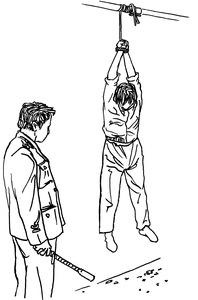 Torture illustration: Hung up by the wrists
Torture illustration: Hung up by the wrists
In October that year the guards isolated me and had me stand in a room for over ten days without sleep.
Spreading Rumors
Guard Cui spread rumors that I had a mental illness and put me under isolation in April 2004. She called my family and asked them to send in money for my “treatment.” The call further saddened my family because they were not allowed to visit me.
The guards took me to Shenyang Mental Hospital, trying to get me diagnosed with some sort of mental disorder so that they could force me to take unknown drugs. I told the doctor that being a music teacher, I sometimes sang to myself in the labor camp to cope with my emotions because I was tortured and I missed my family. I explained to the doctor that my family had no history of mental illness, and took a psychological test. The doctor wrote in his diagnosis that I was mentally sound.
Guard Cui later told me that if I’d claimed that I was mentally ill, I would be eligible for medical bail. I refused to do so. If I had taken up her offer, she’d have an excuse to inject me with unknown drugs and actually turn me into a mentally ill person. I would never be able to go back to work after I was released.
Strict Management
Many practitioners, myself included, stopped following the guards’ orders in March 2005 to protest the unlawful incarceration. They demanded their release without charges and refused to work, wear the prison uniform, and eat. The labor camp put the practitioners in Strict Management Teams and allocated additional guards to each team. I was assigned to Team Four, and the team lead was still guard Cui.
The practitioners under strict management had to sit on small stools in their cells from 5 a.m. to bed time. They were not allowed to get up, talk to each other, and look outside. Two cameras were installed in the front and back of the cell to monitor the practitioners around the clock. The practitioners had to take turns going to the bathroom so they would not run into one another.
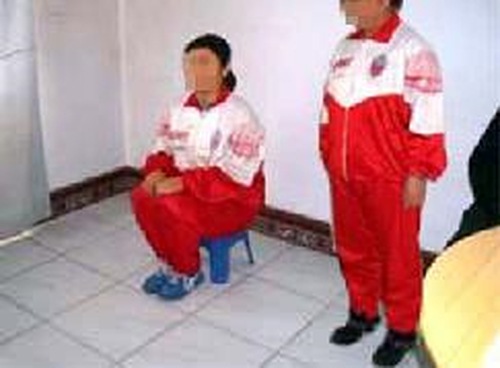 Torture reenactment: sitting still on a small stool for long hours
Torture reenactment: sitting still on a small stool for long hours
Tiny Cell
The labor camp authorities and the guards tried to force practitioners to wear the prison uniform. When I refused to do so, they put me in a tiny cell, which was located on the top floor of a building. The floor was soundproof and no one outside could hear what happened there. A classroom-sized place was partitioned into more than ten tiny cells, each with a surveillance camera and a high-volume speaker.
The cell had a long bench and nothing else. There was no heating or blankets in winter time, and the guards even purposely kept the windows open to make us suffer more. One of the practitioners suffered severe frostbite. The practitioners here were not allowed to wash up, and could only go to the bathroom once a day. The meals were always steamed buns and pickles. Many practitioners had been in the cell for months, despite the rule saying that the maximum detention length was ten days.
The guards force-fed the practitioners who went on a hunger strike once a day. When they force-fed a practitioner next to me, the speaker started blasting loud noise to drown out her screams. Several guards held her down and inserted a plastic tube into her nose, down to her stomach. They then used a syringe to push corn porridge into the tube.
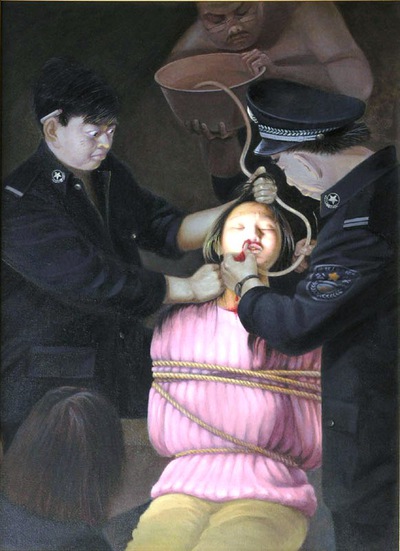 Torture illustration: forced-feeding
Torture illustration: forced-feeding
Freezing
When I was put in the tiny confinement cell, those of us practitioners who remained in the cell continued to sit still on small stools all day. One time, after coming back from the bathroom break, we refused to sit down anymore. Guard Cui removed all the stools and made us sit on thin cushions. Later Cui took away the cushions and made us sit on the tile floor, which was freezing at the time. This lasted six months.
Forced-feeding
I went on a hunger strike to protest the persecution, and the guards started to force-feed me five days later. They dragged me to an empty room and beat and kicked me. Because I couldn’t stop vomiting when they force-fed me, Cui stuck a mop in my mouth trying to push the food back in. She later wiped the mop all over me.
Arbitrary Extension of Term
The authorities could extend the practitioners’ terms at will, from ten days to up to a year. It was a common practice. A guard found Ms. Wang Shuchun with a Falun Dafa article and told her that her term would be extended for one to three months. They extended my term for three months.
When they tried to further extend my term, my mother, who is also a practitioner, decided to write complaint letters to many government departments, and exposed the crimes in the labor camp. A prosecutor from the Shenyang Procuratorate looked into my case and stopped the labor camp authorities from adding more time to my term. I was released on November 19, 2005 after three years and three months. I went back to teaching the year after.
All content published on this website are copyrighted by Minghui.org. Minghui will produce compilations of its online content regularly and on special occasions.
Category: Torture of Women






